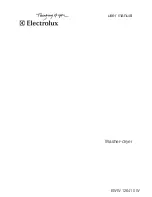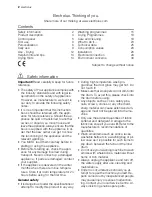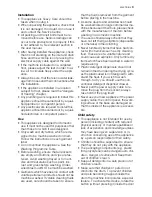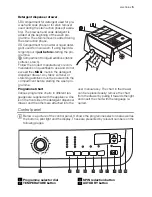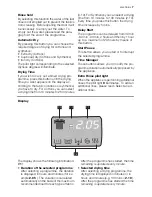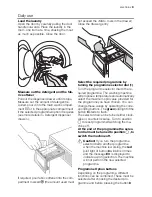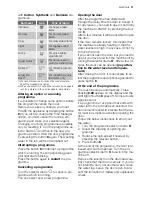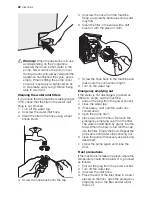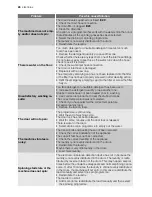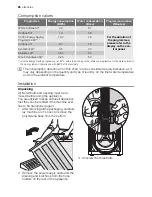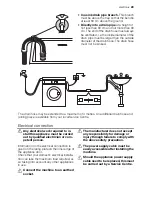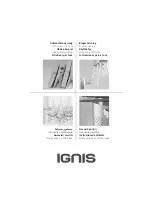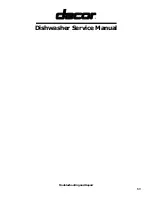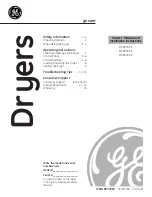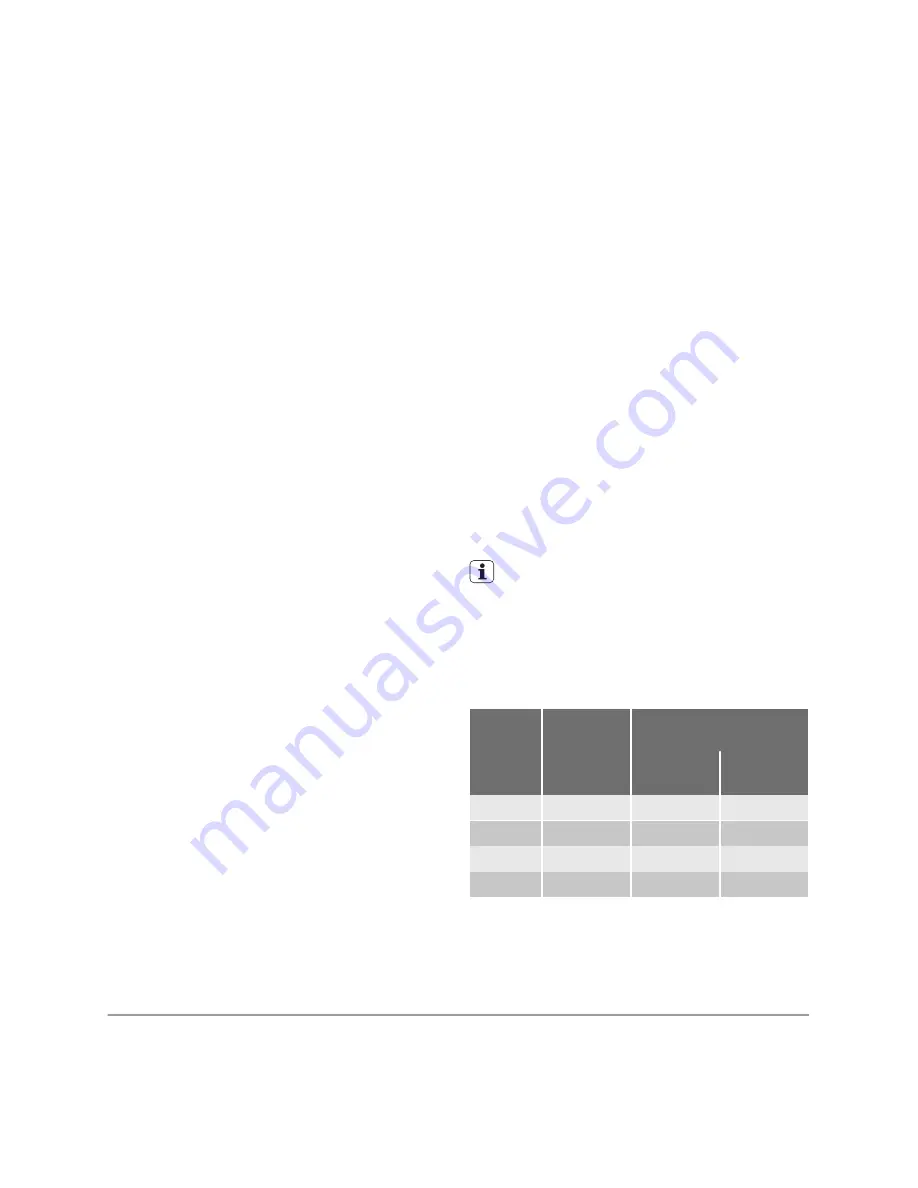
dab the stain with the fingertips and a cotton
cloth.
Rust:
oxalic acid dissolved in hot water or a
rust removing product used cold. Be careful
with rust stains which are not recent since the
cellulose structure will already have been
damaged and the fabric tends to hole.
Mould stains:
treat with bleach, rinse well
(whites and fast coloureds only).
Grass:
soap lightly and treat with bleach
(whites and fast coloureds only).
Ball point pen and glue:
moisten with ace-
tone
1)
, lay the garment on a soft cloth and
dab the stain.
Lipstick:
moisten with acetone as above,
then treat stains with methylated spirits.
Treat any residual marks with bleach.
Red wine:
soak in water and detergent,
rinse and treat with acetic or citric acid, then
rinse. Treat any residual marks with bleach.
Ink:
depending on the type of ink, moisten
the fabric first with acetone
1)
, then with acetic
acid; treat any residual marks on white fab-
rics with bleach and then rinse thoroughly.
Tar stains:
first treat with stain remover, me-
thylated spirits or benzine, then rub with de-
tergent paste.
Detergents and additives
Good washing results also depend on the
choice of detergent and use of the correct
quantities to avoid waste and protect the en-
vironment.
Although biodegradable, detergents contain
substances which, in large quantities, can
upset the delicate balance of nature.
The choice of detergent will depend on the
type of fabric (delicates, woollens, cottons,
etc.), the colour, washing temperature and
degree of soiling.
All commonly available washing machine de-
tergents may be used in this appliance:
• powder detergents for all types of fabric
• powder detergents for delicate fabrics
(60°C max) and woollens
• liquid detergents, preferably for low tem-
perature wash programmes (60°C max)
for all types of fabric, or special for wool-
lens only.
The detergent and any additives must be
placed in the appropriate compartments of
the dispenser drawer before starting the
wash programme.
If using liquid detergents, a programme
without
prewash must be selected.
Your appliance incorporates a recirculation
system which allows an optimal use of the
concentrated detergent.
Follow the product manufacturer’s recom-
mendations on quantities to use and do
not
exceed the «MAX» mark in the detergent
dispenser drawer
.
Degrees of water hardness
Water hardness is classified in so-called “de-
grees” of hardness. Information on hardness
of the water in your area can be obtained
from the relevant water supply company, or
from your local authority.
A water softener must be added when
water has a medium-high degree of
hardness (from degree of hardness II).
Follow the manufacturer’s instructions.
The quantity of detergent can then al-
ways be adjusted to degree of hardness
I (= soft).
Level
Charac-
teristic
Degrees of water
hardness
German
°dH
French
°T.H.
1
soft
0-7
0-15
2
medium
8-14
16-25
3
hard
15-21
26-37
4
very hard
> 21
> 37
Drying Hints
Preparing the drying cycle
As a dryer, the appliance works on the con-
densation principle.
Therefore, the water tap must be open
and the drain hose must drain water into
a sink or into the drain pipe, even during
the drying cycle.
Attention!
Before starting the drying programme, re-
duce the loads of washed laundry, in order
to obtain good performances.
1) do not use acetone on artificial silk
14
electrolux
Summary of Contents for EWW 126410 W
Page 1: ...user manual Washer dryer EWW 126410 W ...
Page 31: ...electrolux 31 ...

